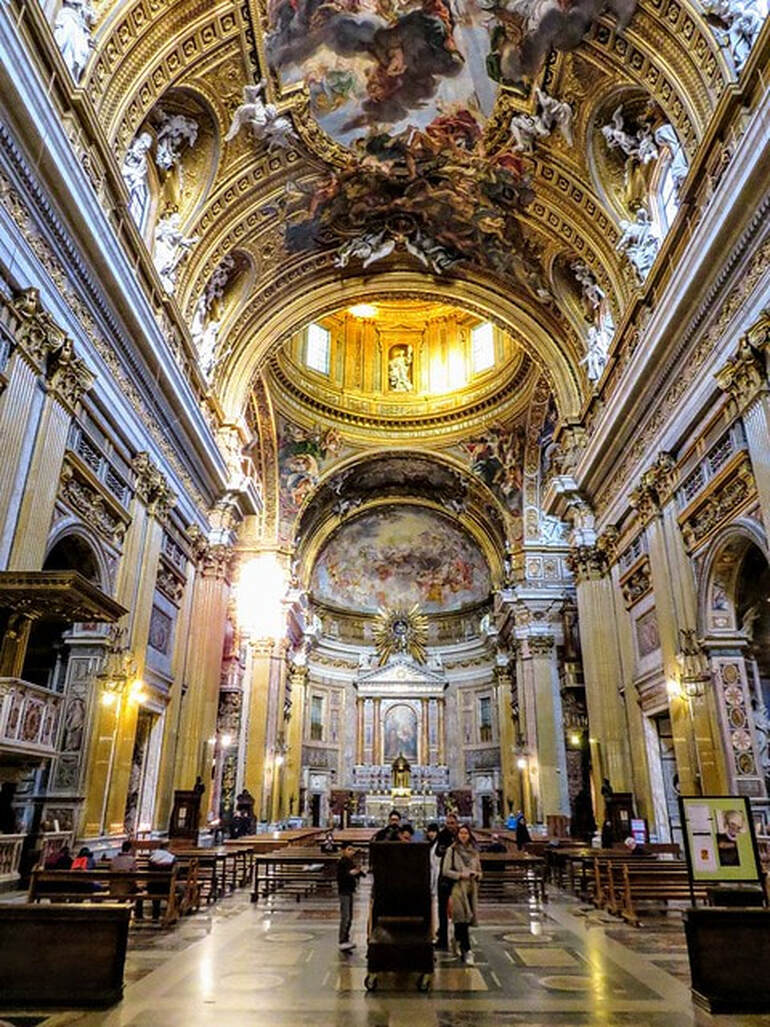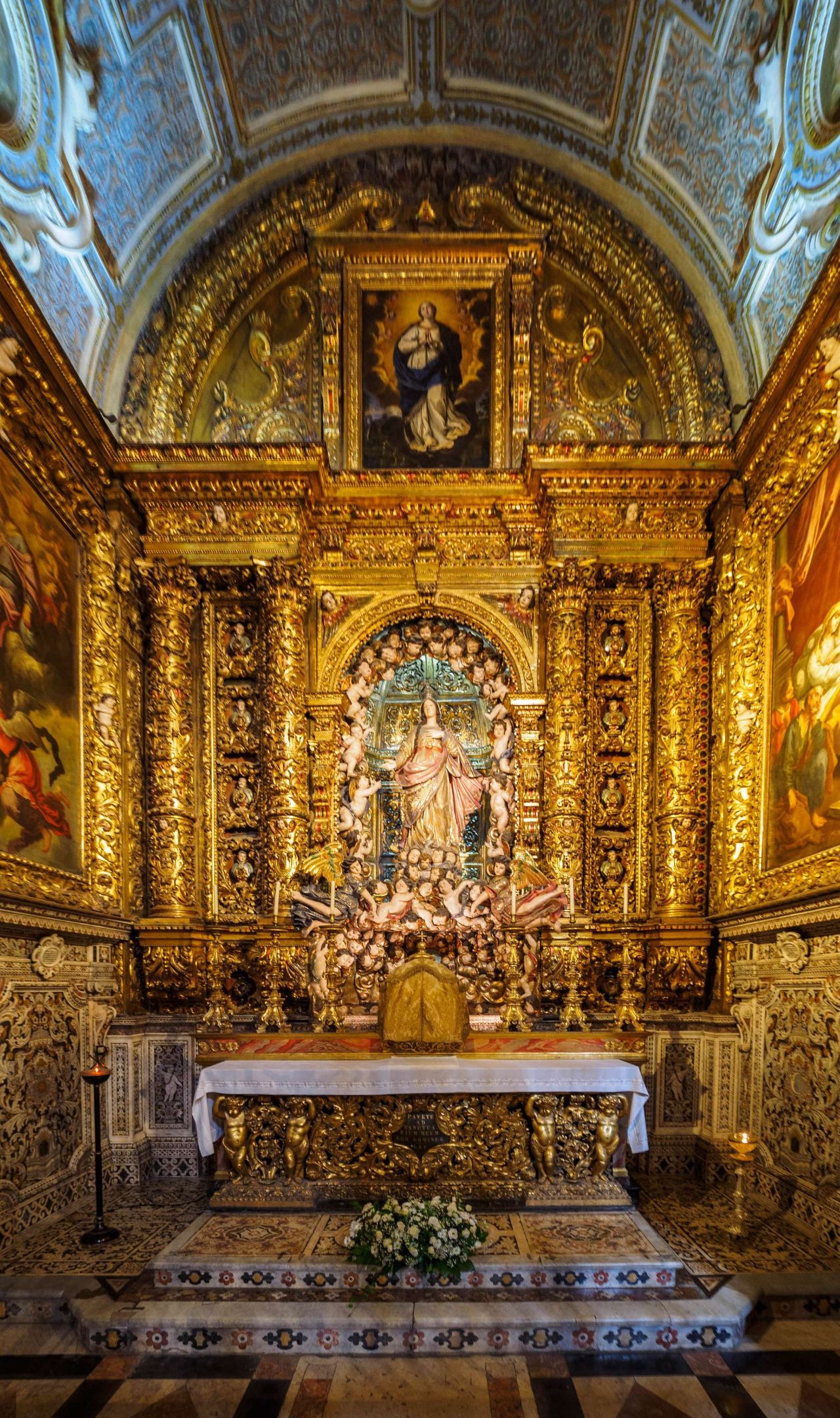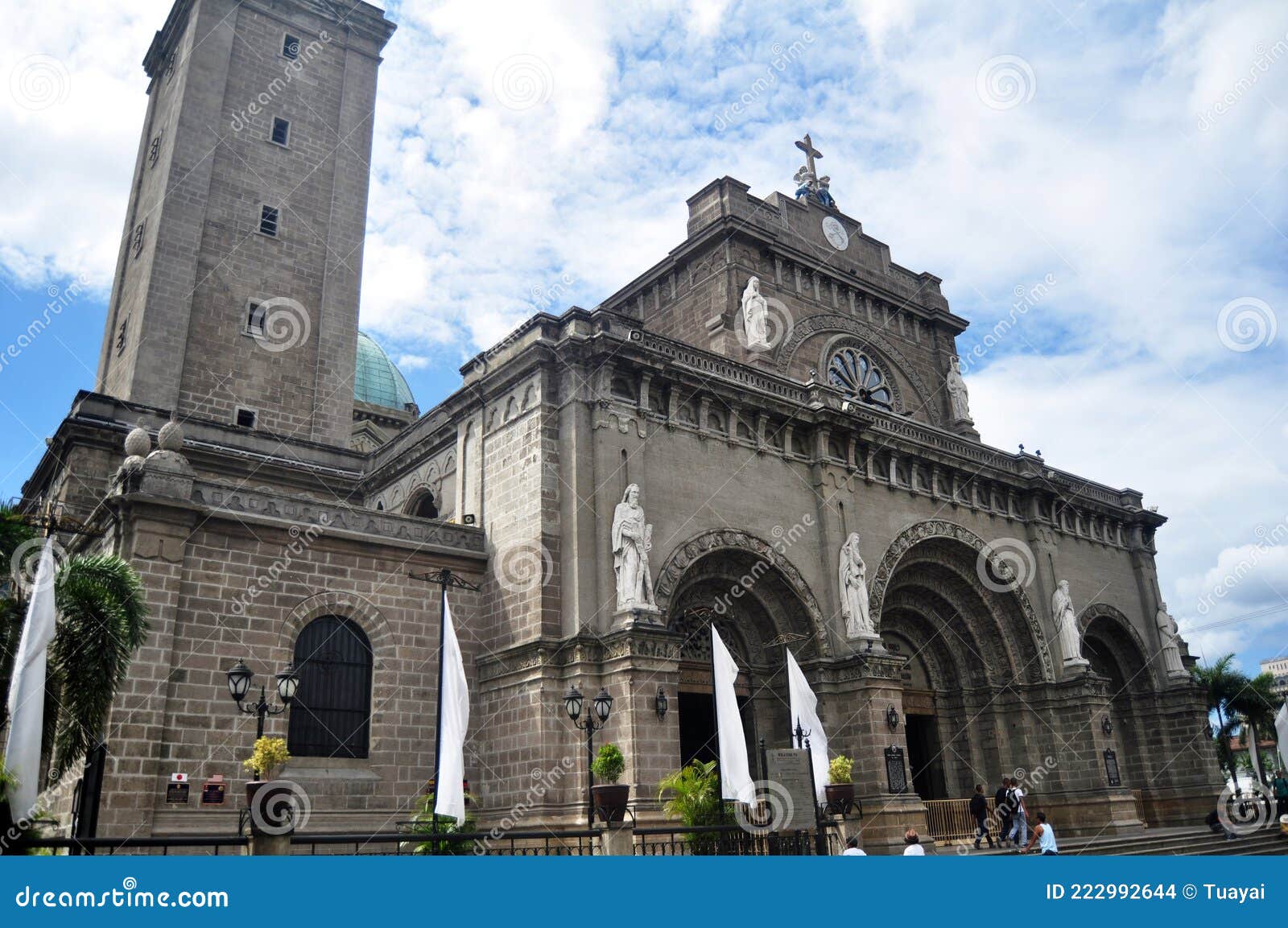Basilica di Santa Cecilia in Trastevere
Roman Catholic
4.7 (3679 reviews)
Founded in 5th century (rebuilt in 9th and 18th centuries)
The Basilica di Santa Cecilia in Trastevere is dedicated to the Roman martyr Saint Cecilia. It is said to be built on the site of her house. The basilica has undergone several restorations over the centuries, most notably in the 9th century and again in the 18th century, giving it its current Baroque appearance. Notable features include the crypt, the statue of Saint Cecilia by Stefano Maderno, and the mosaics in the apse.
About
The Basilica di Santa Cecilia in Trastevere is dedicated to the Roman martyr Saint Cecilia. It is said to be built on the site of her house. The basilica has undergone several restorations over the centuries, most notably in the 9th century and again in the 18th century, giving it its current Baroque appearance. Notable features include the crypt, the statue of Saint Cecilia by Stefano Maderno, and the mosaics in the apse.
History
The basilica is built on the supposed site of Saint Cecilia's house. She was martyred in the 3rd century AD. The basilica has been rebuilt and restored several times, leading to its current architectural style.
Founded
5th century (rebuilt in 9th and 18th centuries)
Denomination
Roman Catholic
Architectural Style
Baroque (primarily); elements of Romanesque and other styles present due to multiple restorations.
Historical Status
Papal Basilica
Contact Information
Community Outreach
Senior Programs
[]
Facilities & Amenities
Accessibility
Wheelchair Accessibility
Yes
Amenities
Restrooms
Yes
Cafe/Bookstore
No
Children Area/Nursery
No
Transportation
Parking
No
Public Transport
Yes
Visitor Guidelines
Photography
Yes (usually, but check on-site rules)
Dress Code
Yes (modest clothing required)
Entry Fee
No (entrance to the basilica is free; crypt requires a ticket)
Visitor Information
Best Visiting Times
Morning or late afternoon to avoid crowds
Tourist Friendly
Limited
Mobile App Support
Not available
Pilgrimage Information
Yes
Reviews & Ratings
4.7
Based on 3.68k reviews
No reviews yet
Blog Post
Basilica di Santa Cecilia in Trastevere: A Roman Sanctuary of Art and History
Nestled in the charming Trastevere neighborhood of Rome, the Basilica di Santa Cecilia in Trastevere stands as a testament to centuries of faith, art, and history. More than just a church, it's a pilgrimage site dedicated to Saint Cecilia, a Roman martyr who lived in the 3rd century AD. Visiting this Papal Basilica offers a captivating journey through time, blending ancient Roman foundations with stunning Baroque architecture.
Address: Piazza di Santa Cecilia, 22, 00153 Roma RM, Italy
A Journey Through Time: The History of Santa Cecilia
The Basilica di Santa Cecilia boasts a rich and complex history, reflecting Rome's own transformation over the millennia. The basilica is built upon the supposed site of Saint Cecilia's house, where she is believed to have lived and been martyred. While the original structure dates back to the 5th century, it has undergone significant renovations throughout the ages. A major rebuilding occurred in the 9th century, followed by a dramatic Baroque transformation in the 18th century, shaping the church as we see it today. This layered history makes it a fascinating site for history buffs and religious pilgrims alike. The architectural style reflects this evolution, primarily Baroque but with notable Romanesque elements and hints of earlier periods.
Architectural Marvels: A Blend of Styles
The architectural grandeur of the Basilica di Santa Cecilia is a major draw for visitors. The facade, designed by Ferdinando Fuga, is a striking example of Baroque architecture. Stepping inside, you'll be greeted by a spacious interior, a testament to the church's medium-to-large size.
Key architectural features include:
- Facade by Ferdinando Fuga: Admire the elegant Baroque facade that welcomes visitors.
- Courtyard with Ancient Roman Remains: Discover remnants of ancient Rome in the basilica's courtyard, offering a glimpse into the site's pre-Christian past.
- Stefano Maderno's Statue: The centerpiece of the basilica is undoubtedly the breathtaking statue of Saint Cecilia by Stefano Maderno. This incredibly lifelike sculpture depicts the saint lying as she was purportedly found during a renovation, a powerful and moving piece of art.
- Apse Mosaics: Marvel at the beautiful apse mosaics, remnants of the earlier structures, depicting religious figures and scenes.
- Byzantine-style Cosmatesque Pavement: Notice the intricate and colorful cosmatesque pavement that exemplifies Byzantine influence.
- Crypt: Explore the crypt beneath the basilica, a sacred space containing relics of Saint Cecilia and other important figures. A separate ticket is required for entry.
- Bell Tower: The basilica features a bell tower, adding to its impressive skyline.
Unveiling the Treasures Within: Notable Features
Beyond the architecture, the Basilica di Santa Cecilia in Trastevere houses a collection of artistic treasures that will captivate any visitor. One of the most famous pieces is the statue of Saint Cecilia by Stefano Maderno. This striking sculpture, created in 1600, depicts the saint exactly as she was supposedly found when her tomb was opened. Other notable features include the stunning apse mosaics, remnants of the original 9th-century basilica, and fragments of Cavallini's Last Judgement frescoes. Don't miss the opportunity to explore the crypt, which contains the relics of Saint Cecilia and other historical artifacts.
Planning Your Visit: Tourist Information and Accessibility
The Basilica di Santa Cecilia is a tourist-friendly site, welcoming visitors from all over the world. Entry to the main basilica is free. However, a separate ticket is required to access the crypt.
Accessibility: The basilica is wheelchair accessible, ensuring that visitors with mobility issues can comfortably explore the space. However, it's always a good idea to check beforehand for any specific areas with limited access.
Photography: Photography is generally allowed within the basilica, but it's essential to be respectful and check for any on-site rules regarding flash photography or specific areas where photography may be restricted.
Dress Code: As with most religious sites in Italy, a modest dress code is required. Shoulders and knees should be covered.
Best Visiting Times: To avoid crowds, consider visiting the basilica in the morning or late afternoon.
Annual Festivals: Don't miss the Feast of Saint Cecilia on November 22nd, a significant event marked by special celebrations and services.
Practical Visitor Tips for an Enriching Experience
- Dress Modestly: Remember to dress respectfully when visiting the basilica.
- Be Respectful of Religious Services: Be mindful of any religious services or activities taking place.
- Visit the Crypt: Consider purchasing a ticket to explore the crypt and learn more about the basilica's history.
- Check Mass Times: While specific service schedules aren't readily available, inquire locally or online for mass times if you wish to attend.
- Languages Spoken: The primary language spoken is Italian.
Beyond the Basilica: Exploring Trastevere
The Basilica di Santa Cecilia in Trastevere is ideally situated in one of Rome's most charming neighborhoods. After your visit, take some time to explore the surrounding area:
- Trastevere Neighborhood: Wander through the cobblestone streets, discover hidden gems, and soak in the authentic Roman atmosphere.
- Piazza di Santa Maria in Trastevere: Visit this picturesque square, home to another beautiful basilica and a lively gathering place.
- Gianicolo Hill: Take a short walk up Gianicolo Hill for panoramic views of Rome.
Getting There: Travel Information
Public Transport: The Basilica di Santa Cecilia is easily accessible by public transport. Several bus lines serve the Trastevere neighborhood.
Parking: Parking is limited in the area, so using public transport is highly recommended.
The Basilica di Santa Cecilia in Trastevere offers a captivating blend of history, art, and spirituality. Whether you're a religious pilgrim, an art enthusiast, or simply a curious traveler, a visit to this Roman sanctuary is sure to be a memorable experience. Discover the legacy of Saint Cecilia and immerse yourself in the beauty of this hidden gem in the heart of Rome.
Other Roman Catholic Nearby

Chiesa del Gesù
Piazza del Gesù, 00186 Roma RM, Italy
4.8

Chiesa del Gesù
Piazza del Gesù, 00186 Roma RM, Italy
4.8

Basilica of San Clemente
Piazza di S. Clemente, 00184 Roma RM, Italy
4.7

Basilica of San Clemente
Piazza di S. Clemente, 00184 Roma RM, Italy
4.7

Church of Saint Roch
Largo Trindade Coelho, 1200-470 Lisboa, Portugal
4.6

Minor Basilica and Metropolitan Cathedral of the Immaculate Conception - Manila Cathedral
Cabildo, 132 Beaterio St, Intramuros, Manila, 1002 Metro Manila, Philippines
4.7